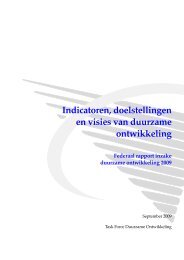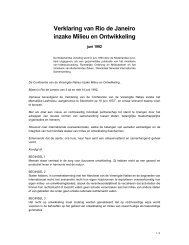long-term care use and supply in europe: projections for germany ...
long-term care use and supply in europe: projections for germany ...
long-term care use and supply in europe: projections for germany ...
You also want an ePaper? Increase the reach of your titles
YUMPU automatically turns print PDFs into web optimized ePapers that Google loves.
LONG-TERM CARE USE AND SUPPLY IN EUROPE | 41<br />
4.4 Projection results<br />
This section describes the results of the projection of LTC <strong>use</strong>rs between 2010 <strong>and</strong> 2060 <strong>for</strong> Germany,<br />
the Netherl<strong>and</strong>s, Spa<strong>in</strong> <strong>and</strong> Pol<strong>and</strong>. The projected numbers of older persons us<strong>in</strong>g residential <strong>care</strong> under<br />
different bio-demographic, risk factor <strong>and</strong> socio-demographic scenarios are presented <strong>in</strong> section 4.4.1.<br />
Section 4.4.2 <strong>and</strong> section 4.4.3 provide the projection results <strong>for</strong> <strong>for</strong>mal <strong>and</strong> <strong>in</strong><strong>for</strong>mal <strong>care</strong> <strong>use</strong> by older<br />
persons resid<strong>in</strong>g at home. Next, section 4.4.4 summarizes projection results <strong>for</strong> all types of <strong>care</strong> <strong>in</strong> the<br />
total <strong>and</strong> disabled population. More detailed projection results are provided <strong>in</strong> Table A4.6 to Table<br />
A4.15 <strong>in</strong> Appendix.<br />
4.4.1 Projected numbers of residential <strong>care</strong> <strong>use</strong>rs<br />
Table 4.2 shows that, under the base DELAY scenario, the numbers of residential <strong>care</strong> <strong>use</strong>rs <strong>in</strong> Germany<br />
are projected to <strong>in</strong>crease from approximately 650,000 <strong>in</strong> 2010 to around 1,300,000 <strong>in</strong> 2060, an <strong>in</strong>crease<br />
of 102%. The numbers of residential <strong>care</strong> <strong>use</strong>rs are projected to <strong>in</strong>crease gradually to the end of the<br />
projection horizon, peak<strong>in</strong>g at approximately 1,360,000 <strong>in</strong> 2055 <strong>and</strong> then decl<strong>in</strong><strong>in</strong>g to 1,310,000 <strong>in</strong><br />
2060. The base year estimate of around 650,000 residential <strong>care</strong> <strong>use</strong>rs closely matches the number of<br />
persons receiv<strong>in</strong>g benefits from the <strong>long</strong>-<strong>term</strong> <strong>care</strong> <strong>in</strong>surance scheme <strong>for</strong> residential <strong>care</strong> (650,262 <strong>in</strong><br />
2009).<br />
Table 4.2 Projected numbers of residential <strong>care</strong> <strong>use</strong>rs, <strong>in</strong> Germany, the Netherl<strong>and</strong>s, Spa<strong>in</strong> <strong>and</strong> Pol<strong>and</strong>,<br />
2010-2060,DELAY scenario (<strong>in</strong> thous<strong>and</strong>s)<br />
2010 2015 2020 2025 2030 2035 2040 2045 2050 2055 2060<br />
% <strong>in</strong>crease<br />
2010-2060<br />
DE 648 729 814 906 978 1028 1108 1218 1321 1360 1310 102%<br />
NL 142 160 180 206 245 299 339 375 408 429 426 200%<br />
ES 364 400 426 465 522 593 680 777 858 918 954 162%<br />
PL 59 67 77 88 98 110 121 129 136 141 149 152%<br />
Source: Own calculations based on Bonneux et al. (2011), Chapter 1, Statistisches Bundesamt (2009), Schulz<br />
(2008), Statistics Netherl<strong>and</strong>s (2011), Gol<strong>in</strong>owska <strong>and</strong> Sowa (2011), GUS 2000-2010a, GUS<br />
2000-2010b.<br />
In the Netherl<strong>and</strong>s, the projected <strong>in</strong>crease <strong>in</strong> the numbers of residential <strong>care</strong> <strong>use</strong>rs amounts to 200%,<br />
from around 140,000 <strong>in</strong> 2010 to approximately 425,000 <strong>in</strong> 2060. The numbers of residential <strong>care</strong> <strong>use</strong>rs<br />
are projected to <strong>in</strong>crease gradually to 2055 <strong>and</strong> to decl<strong>in</strong>e afterwards. The estimated base year number of<br />
residential <strong>care</strong> <strong>use</strong>rs is slightly less than the number of 155,560 residential <strong>care</strong> <strong>use</strong>rs reported <strong>for</strong> 2009<br />
by Statistics Netherl<strong>and</strong>s, based on adm<strong>in</strong>istrative records of the Algemene Wet Bijzondere<br />
Ziektekosten (AWBZ, Exceptional Medical Expenses Act; latest available figure). The latter figure<br />
<strong>in</strong>cludes persons temporarily stay<strong>in</strong>g <strong>in</strong> residential <strong>care</strong> facilities. For Spa<strong>in</strong>, the numbers of residential<br />
<strong>care</strong> <strong>use</strong>rs are projected to <strong>in</strong>crease from around 365,000 <strong>in</strong> 2010 to almost 955,000 <strong>in</strong> 2060, an <strong>in</strong>crease<br />
of 162%. The rate of <strong>in</strong>crease is projected to be relatively low until 2025 but to accelerate considerably<br />
afterwards. The base year number of residential <strong>care</strong> <strong>use</strong>rs is higher than the number of residential <strong>care</strong><br />
<strong>use</strong>rs (222,521 <strong>in</strong> 2008) reported <strong>in</strong> the WP 1 country report <strong>for</strong> Spa<strong>in</strong> (Gutiérrez et al., 2010). The latter<br />
figure <strong>in</strong>cludes dependent residents only <strong>and</strong>, as is illustrated <strong>in</strong> Table 4.3 below, <strong>in</strong> Spa<strong>in</strong> a considerable<br />
share of residential <strong>care</strong> <strong>use</strong>rs is not ADL dependent. For Pol<strong>and</strong>, the numbers of residential <strong>care</strong> <strong>use</strong>rs<br />
will <strong>in</strong>crease from about 59,000 <strong>in</strong> 2010 to about 149,000 <strong>in</strong> 2060, an <strong>in</strong>crease of 152 %. There is no<br />
s<strong>in</strong>gle data source cover<strong>in</strong>g the total numbers of people <strong>in</strong> residential <strong>care</strong> <strong>in</strong> Pol<strong>and</strong> <strong>and</strong> the figures<br />
published vary substantially. We are grateful to colleagues at CASE (<strong>for</strong> provid<strong>in</strong>g us with an estimate.<br />
Please note that the basel<strong>in</strong>e figure <strong>for</strong> number of people <strong>in</strong> <strong>care</strong> homes <strong>in</strong> Pol<strong>and</strong> is expected to grow<br />
fast <strong>in</strong> the next few years, which means that <strong>projections</strong> assum<strong>in</strong>g that numbers <strong>in</strong> <strong>care</strong> homes grow at<br />
the same rate as numbers of older disabled people may result <strong>in</strong> an underestimate.
















